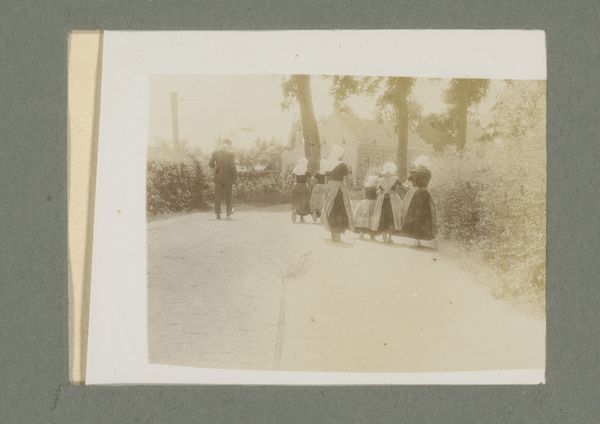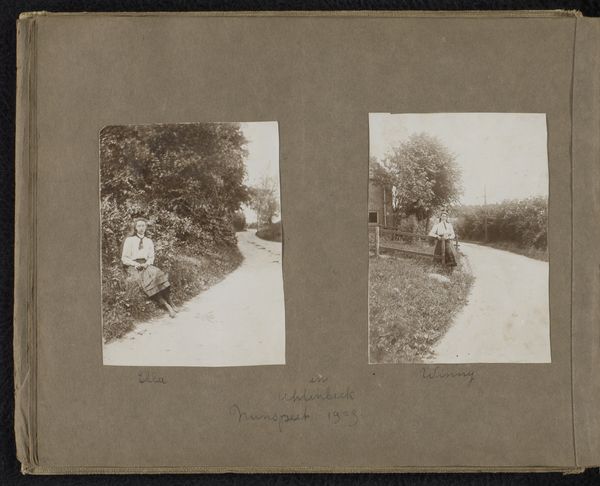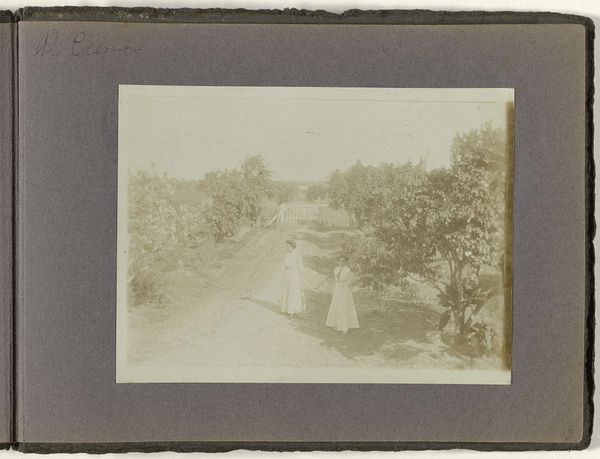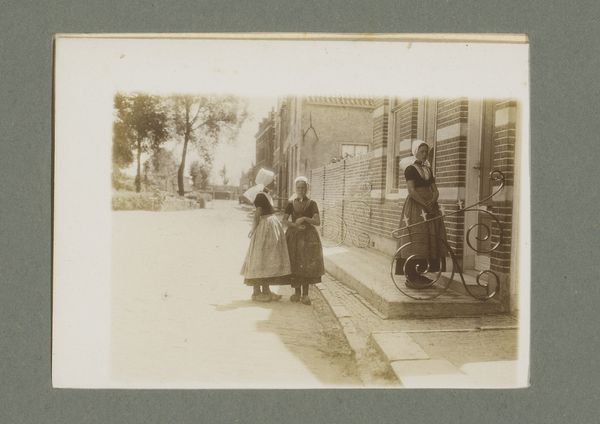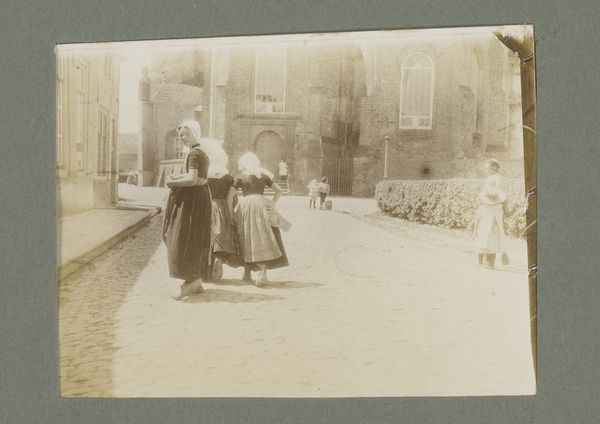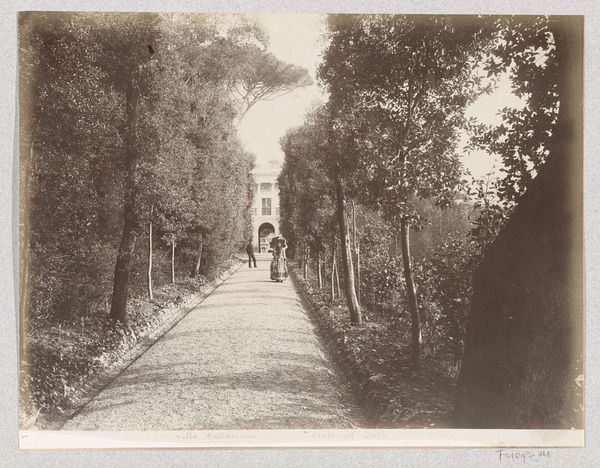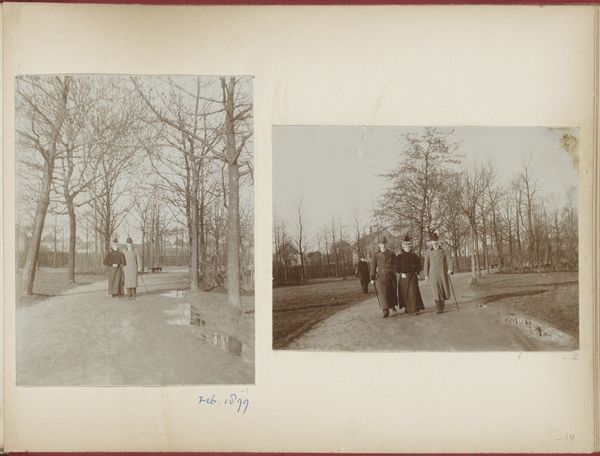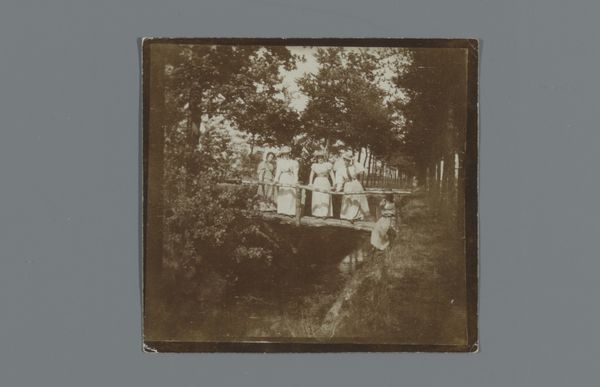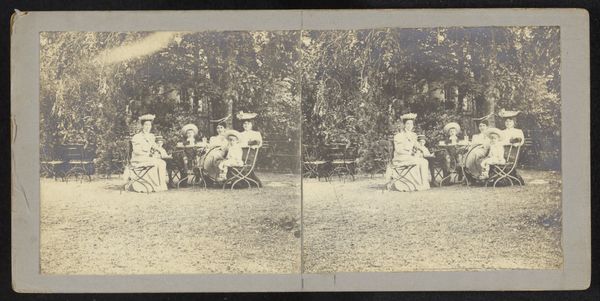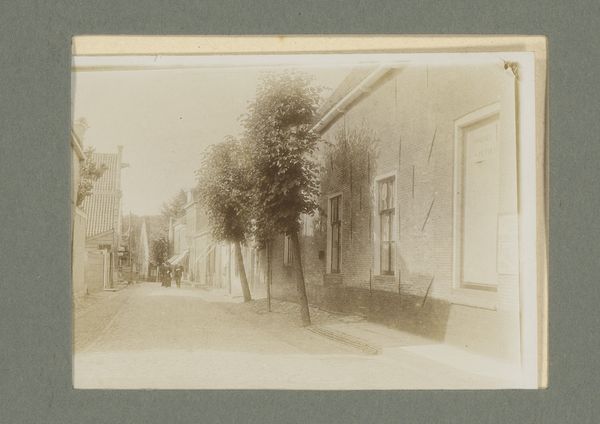
photography, gelatin-silver-print
#
portrait
#
pictorialism
#
photography
#
gelatin-silver-print
#
genre-painting
#
realism
Dimensions: height 73 mm, width 99 mm
Copyright: Rijks Museum: Open Domain
Editor: This photograph, "Gezin in klederdracht, op de rug gezien," or "Family in Traditional Dress, Seen from the Back" was taken sometime between 1920 and 1940, profile attributed to G. Hidderley. It's a gelatin silver print, and what strikes me is the anonymity of the figures; they’re deliberately facing away. How should we interpret this? Curator: That's a very astute observation. The family, shown from behind in traditional dress, invites us to consider the complexities of identity and representation during this period. Consider the socio-political context: what purpose might such a presentation serve in the public sphere? Is this about preservation, observation, or something more complicated? Editor: I'm not sure I follow. Preservation of what? Observation by whom? Curator: Think about the rise of ethnographic studies and tourism in the early 20th century. Photography played a key role in shaping perceptions of regional and national identities. The "picturesque" nature of traditional dress was often emphasized, sometimes reinforcing stereotypes. Was this photo perhaps meant for circulation outside of its local community? Did it cater to outsiders’ ideas? What political meaning could there be in asserting this rural tradition? Editor: So, the seemingly simple act of photographing a family could have multiple layers of meaning, tied to broader cultural and even political forces? Curator: Precisely. The composition—the family receding into the landscape—also prompts us to question their agency. Are they active participants in the scene, or objects to be viewed? What’s powerful here is seeing the picture not as a mirror but as a carefully constructed narrative with ideological undertones. Editor: That shifts my whole perspective! I see the framing and focus not just as an aesthetic choice, but as a statement. Curator: And that’s the crucial step – understanding the forces at play that influenced not only the image’s creation, but its meaning and reception in its own time, and even ours. Editor: It’s made me appreciate the photograph's historical complexities beyond just its face value, or in this case, its back view.
Comments
No comments
Be the first to comment and join the conversation on the ultimate creative platform.

